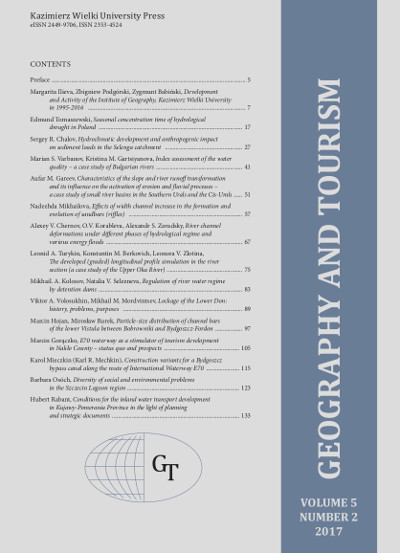Hydroclimatic development and anthropogenic impact on sediment loads in the Selenga catchment
Słowa kluczowe:
fluvial processes, climate changes, land use, sediment loads, water quality, influence of mining, Selenga RiverAbstrakt
The present study focuses on the relationships between fluvial processes, climate and land-use changes in the Selenga River catchment. The results indicate that high sediment loads were reported both for altered and natural rivers. The reported multidecadal declines in sediment loads in the downstream part of the Selenga River can be attributed to the abandonment of cultivated lands and changing hydroclimatic factors, in particular a climate-driven decrease in water flows and intensified water use for irrigation purposes. Empirical sediment rating curves show that a series of peak flow events during spring and summer contributes to the main part (up to 98%) of the annual sediment and pollution loads. The highest contribution of flood sediment loads was determined for specific wet years and the lowest – for dry years, which generally reflects the increase in water runoff during high floods in the annual flow. While sediment flows are connected with hydroclimatic conditions in the catchment, the elemental composition of mass flows is mostly related to soil/petrologic conditions. With the exception of small impacted rivers where water quality effects associated with mining were observed, the formation of elemental composition and sediment-associated chemical constituents generally reflects catchment characteristics.

